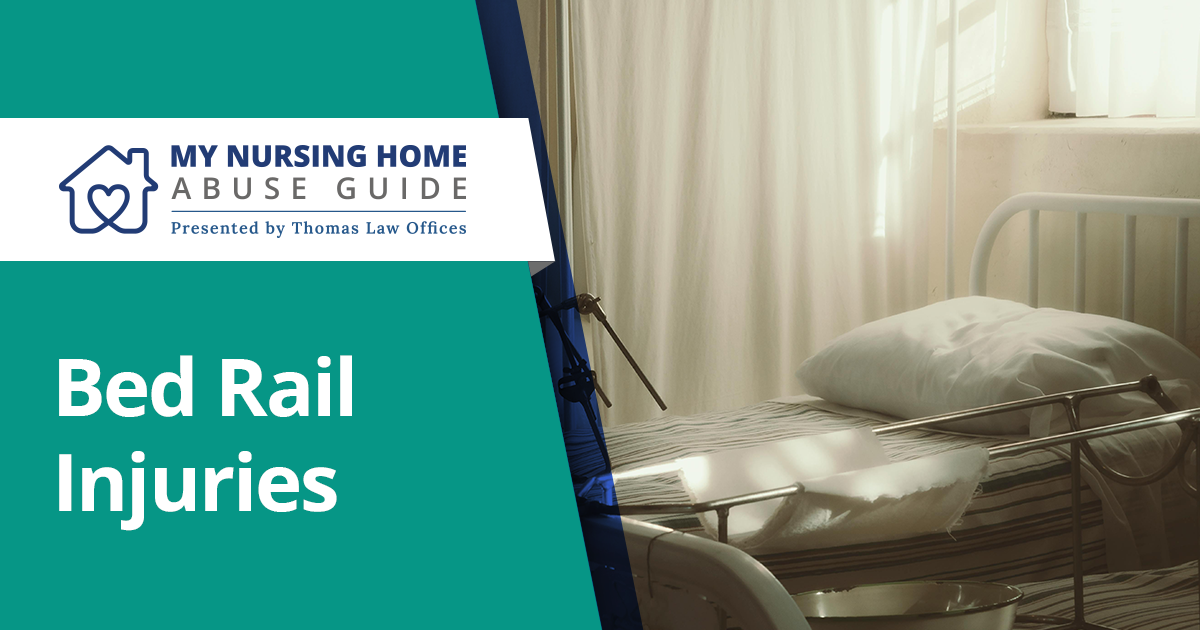Your Guide to Nursing Home Abuse & Prevention
Millions of elderly adults live in nursing home facilities.
Every one of them deserves to feel safe, protected, and respected.
Millions of elderly adults live in nursing home facilities.
Every one of them deserves to feel safe, protected, and respected.

Bed rails are commonly used in nursing homes to assist residents with mobility, prevent falls, and provide support while in bed. While bed rails can be beneficial, they also pose risks of injury if not used properly or if residents become trapped or entangled.
Bed rails are metal or plastic barriers attached to the sides of beds to help residents move safely in and out of bed, provide support while sleeping or sitting up, and prevent falls. Bed rails can be adjustable or fixed and may include side rails, half rails, or full-length rails, depending on the resident’s needs and preferences.
Understanding the potential risks and implementing appropriate safety measures is essential for preventing bed rail injuries in nursing home settings.
The U.S. Consumer Product Safety Commission (CPSC) cautions that there is an unreasonable risk of injury and death by entrapment and other hazards from adult portable bed rails, with 284 fatal incidents between January 2003 and December 2021.
The use of permanent or portable bed rails in nursing homes, while intended to enhance resident safety, can also pose various risks of injury if not managed properly.
These risks include:
Overall, while bed rails can provide support and safety for residents in nursing homes, it is essential to recognize and address the potential risks associated with their use to ensure resident safety and well-being.
Implementing appropriate safety measures, conducting regular risk assessments, and providing staff education and training on bed rail safety are critical steps in mitigating these risks and promoting a culture of safety within nursing home settings.
Preventing bed rail injuries in nursing homes requires a multifaceted approach focusing on resident safety, staff training, and regulatory compliance. Some key strategies for preventing bed rail injuries include:
Conducting comprehensive assessments of residents’ mobility, cognitive function, and risk factors for falls and injuries can help identify individuals who may benefit from bed rail use and those at increased risk of harm. Regular monitoring and reassessment of residents’ needs and conditions are essential for ensuring that bed rails are used safely and appropriately.
Ensuring that bed rails are installed correctly, securely attached to the bed frame, and in good working condition is essential for preventing accidents and injuries. Staff should receive training on proper bed rail installation, inspection, and maintenance procedures. They should regularly inspect bed rails for signs of damage, wear, or malfunction.
Providing comprehensive education and training programs for nursing home staff on bed rail safety, risk assessment, and injury prevention strategies can help promote a culture of safety and awareness within the facility. Staff should be trained to recognize the signs of bed rail injuries, respond appropriately to resident needs and concerns, and implement preventive measures to reduce the risk of accidents and injuries.
Compliance with state and federal regulations governing bed rail use and safety in nursing homes is essential for protecting residents and minimizing the risk of injuries. Nursing homes should adhere to regulatory standards and guidelines for bed rail design, installation, use, and monitoring and should implement quality improvement initiatives to identify and address potential safety concerns or deficiencies.
Bed rails play a valuable role in promoting resident safety and mobility in nursing homes, but they also pose risks for injury if not used properly or if residents become trapped or entangled.
By understanding the potential risks, implementing appropriate safety measures, and promoting a culture of safety and awareness within the facility, nursing homes can help prevent bed rail injuries and ensure the well-being of their residents.
This website was created and is maintained by the legal team at Thomas Law Offices. Our attorneys are experienced in a wide variety of nursing home abuse and neglect cases and represent clients on a nationwide level. Call us or fill out the form to the right to tell us about your potential case. We will get back to you as quickly as possible.
866-351-2504